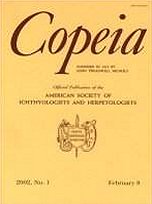The thermal and hydric environment during incubation of turtle eggs influences hatchling size, sex, energy reserves, and thus their quality. Information on the natural nest environment of flatback turtles (Natator depressus) is lacking. Therefore, the current study investigated the thermal and hydric environment of their nest chambers and nesting beach (at Peak Island, east coastal Queensland during the 1996/1997 and 1997/1998 nesting seasons). The temperature of nest chambers and the nesting beach showed temporal and spatial variation. Beach temperature increased through the nesting season as summer progressed and showed significant vertical and lateral variation. The temperature in the core of nest chambers increased as incubation progressed (on average 7 C) apparently because of both metabolic heating and the natural seasonal increase in sand temperature. The temperature range of nests was 25.5–36.5 C, with many nests exposed to temperatures above 35 C for extended periods. Water content of sand surrounding nest chambers at the beginning of incubation ranged from 2.6–7.8% (w/w), varying with date of laying and location on the beach. Natator depressus eggs may be more tolerant of high incubation temperatures and severe moisture stress than those of most other sea turtle species. Nest success was not influenced by the position of the nest on the beach but was positively related to clutch size. Neither nest success nor clutch size varied significantly between subsequent clutches of an individual female. Hatchling sex ratio at this beach possibly depends on the date of egg laying. Because high density nesting occurs when beach temperature appears to produce almost all female hatchlings, the hatchling sex ratio at Peak Island is likely to be biased toward females. Data gathered in the current study will assist in the development of management strategies to protect this endemic species.
How to translate text using browser tools
1 May 2002
Incubation Environment and Nest Success of the Flatback Turtle (Natator depressus) from a Natural Nesting Beach
Suhashini Hewavisenthi,
C. John Parmenter
ACCESS THE FULL ARTICLE





